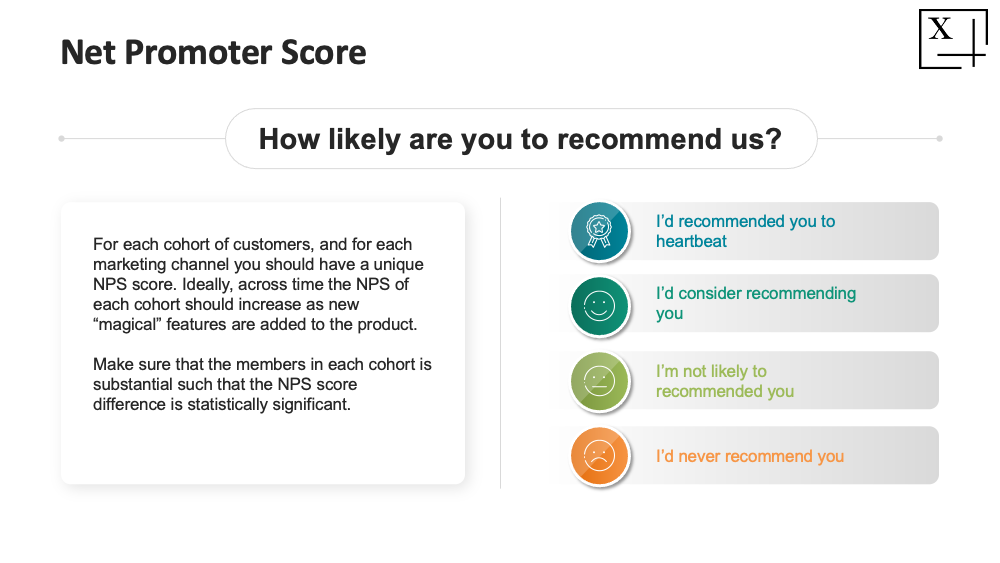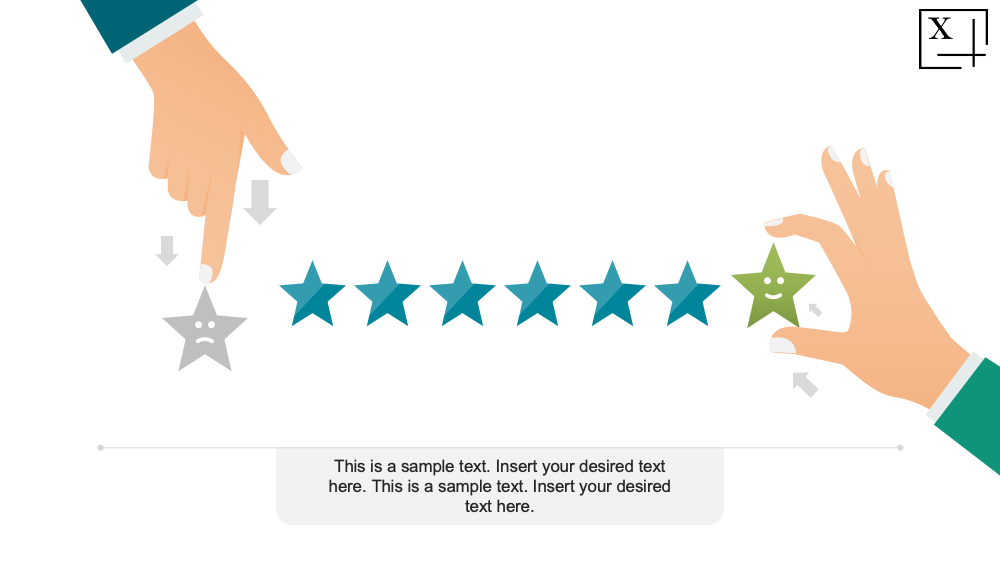Synopsis
Can you improve interactions with prospective and current customers, develop new addictive products, reduce possible churn and prove your commitment to customer success with just one tool? The answer is yes. Our Net Promoter Score (Part 1) presentation allows you to utilize all of the effective features of the framework and run a customer-centric business that thrives.
Slide highlights
Use this slide to group and analyze your customers. NPR divides them into Promoters (loyal enthusiasts); Passives (satisfied but unenthusiastic customers) and Detractors (unhappy customers who can potentially damage your brand).
With this slide, brainstorm the questions or showcase the NPR survey and ask your customers to rate your products and services, find out how satisfied they are with the product or service and what they think you could improve.
Application
Businesses use Net Promoter Score to measure customer satisfaction and ensure growth. Here's how to calculate your Net Promoter Score, according to a survey development software, SurveyMonkey.
In a nutshell, the Net Promoter Score provides a percentage, based on the category that respondents fall into: Detractors, Passives and Promoters (explained above). To calculate the percentage:
- Enter all of the survey responses into a spreadsheet (Excel or Google Sheets)
- Break down the responses by customer category: Detractors, Passives and Promoters
- Add up the total responses from each category
- To get the percentage, take the category total and divide it by the total number of survey responses
- Subtract the percentage total of Detractors from the percentage total of Promoters and get your Net Promoter Score
The formula is:
(Number of Promoters – Number of Detractors) / (Number of Respondents) x 100
Case studies
Slack
A business communication platform, Slack, uses Net Promoter Score to perfect the company's interactions with prospects and customers. Slack is a great example to look at because it achieved record growth, gaining a $1 billion valuation in only one year, according to HubSpot. The company was able to achieve this through the best marketing technique that ever existed – word-of-mouth; and that is exactly where Net Promoter Score comes into play.
Bill Macaitis, Chief Marketing Officer of Slack, uses Net Promoter Score to improve every single interaction prospective and existing customers have with the Slack product, putting extra emphasis on a holistic view of user experience (UX), which means taking into account not only customer service and sales but also, for example, the appearance of online ads and their legal terms of service.
Macaitis says that ideally, Chief Executive Officers (CEOs) must always know what are the top three reasons why people recommend and do not recommend their brand. That is why, one of the important Key Performance Indicator (KPI) Macaitis uses is not just the number of conversions, but whether or not the converted customers recommend the product to their peers, friends and family.
USAA
The Fortune 500 company, United Services Automobile Association (USAA), utilizes the Net Promoter Score to prove the company committed to customer success. USAA came up with a tool, called the "Innovation Community for Enterprise," which works as an idea-hub for all the USAA employees. This interactive tool allows the company to avoid data silos (groups of raw data that are accessible by one department but isolated from the rest of the organization, per HubSpot) and gain perspective from various departments that typically don't participate in the process.
The "Innovation Community for Enterprise" not only educates the employees but also motivates them to create improved customer experiences. The company then can prove to its clients that the entire organization is dedicated to customer success. USAA's Vice President of Employee Innovation, Lea Sims, once said in an interview for the San Antonio Report that at USAA, "innovation is everyone's job."



















